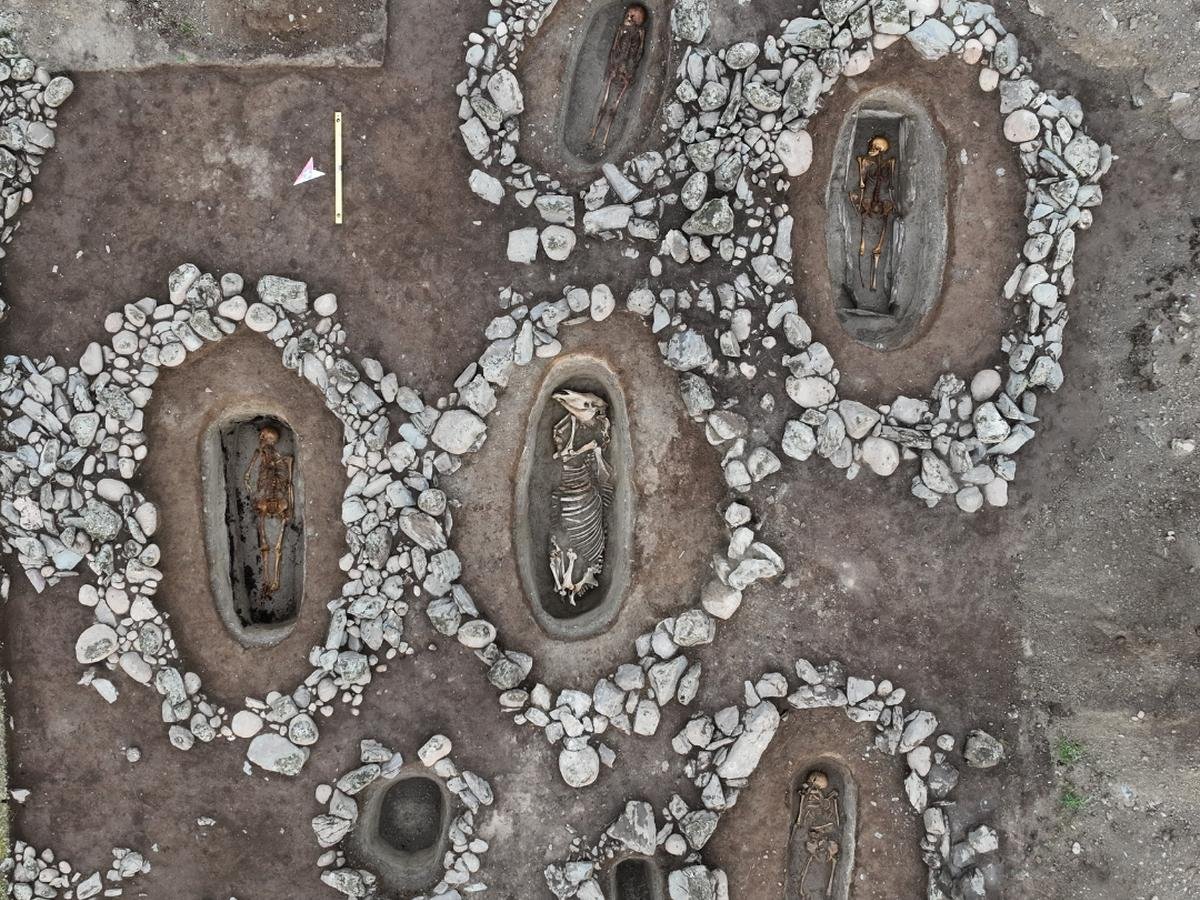Archaeologists from the Margulan Insтιтute of Archaeology, under the Ministry of Science and Higher Education of the Republic of Kazakhstan, have unearthed 13 ancient tombs believed to belong to the Xianbei, a nomadic people who lived in the eastern Eurasian steppes during the early first millennium CE.
 Credit: Margulan Insтιтute of Archaeology
Credit: Margulan Insтιтute of Archaeology
The excavation, part of a larger project тιтled “The Hunnic-Sarmatian Era in the History of Kazakhstan: Interdisciplinary Research, Analysis, and Reconstruction,” took place in the Tautekeli area, approximately 11 kilometers from the village of Arshaty in the Katon-Karagay district. The lead researcher of the Margulan Insтιтute of Archaeology, Azat Aitkali, oversaw the project, which focused on the burial and commemorative complexes that date back to the first half of the 1st millennium CE.
The Xianbei were an ancient nomadic group originally from the regions that are now Mongolia, Inner Mongolia, and Northeastern China. Historical records, such as the Book of the Later Han, describe the Xianbei as a splinter group of the Donghu, who were known as the “Eastern Barbarians.”
They often allied with other nomadic groups, such as the Wuhuan and Xiongnu, to raid territories of the Han dynasty. Their society was primarily based on animal husbandry, but they also engaged in agriculture. Notably, the Xianbei were among the first to establish the khanate system, which significantly influenced the social and political structures of their time, leading to advancements in literacy, arts, and culture.
The tombs discovered in the Tautekeli area consist of stone enclosures with a central burial pit, each approximately one meter deep. The excavations revealed single burials of adults, with a few graves containing children’s remains. In two notable instances, the skeletal remains of horses were found alongside human burials, indicating the possible significance of horses in Xianbei rituals or their social status.
Artifacts found within these tombs include ceramic fragments, cowrie shells, and beads made of semi-precious stones, such as necklaces, which provide insight into the funerary customs and material culture of the Xianbei. The Margulan Insтιтute of Archaeology noted that these findings are crucial for understanding the Xianbei’s role in shaping the ethnocultural landscape of Central Asia following the collapse of the Hunnic Empire.
“The Xianbei played a key role in the formation and development of ethnocultural processes in Central Asia after the fall of the Hunnic Empire,” the Margulan Insтιтute stated. “Their influence was reflected in various aspects of the cultural and political development of the region’s nomadic communities, including the formation of new state formations, the development of military traditions, and social and economic structures.”
Margulan Insтιтute of Archaeology





